Surviving Winter: How Cacti Brave the Cold and Thrive in Frosty Conditions
When we close our eyes and think of cacti, we often picture them in hot deserts, with the blazing sun and a lone Saguaro standing tall in the scorching heat. But did you know that cacti are not limited to deserts alone? They can be found in various places across the continent and even experience the changing seasons, just like we do. And now, many of us have fallen in love with these prickly plants and bring them into our homes. But here’s the question: Can cacti survive the chilly winter months? Let’s find out!
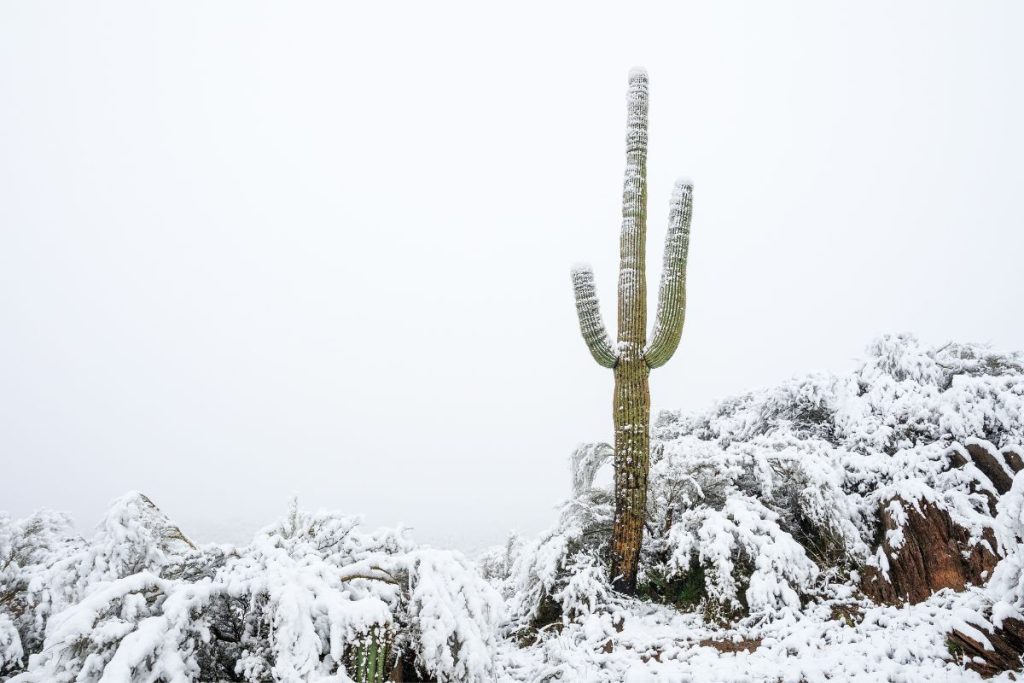
Contents
How do Cacti Survive Winter?
Cacti are like survival experts when it comes to tough conditions. They have clever tricks up their prickly sleeves to survive scorching heat and dry environments.
But when winter comes knocking, they switch up their game plan. Instead of absorbing lots of water like they do in the summer, cacti reduce their water intake or even stop absorbing it altogether. Some species even dry out and harden their bodies to prevent water loss. As the temperatures drop and the air gets drier, cacti seal their water outlets and form a protective shell on the inside, just like hibernating mammals. It’s like they take a cozy nap to brave the icy conditions.
What Temperature is Too Cold for Cacti?
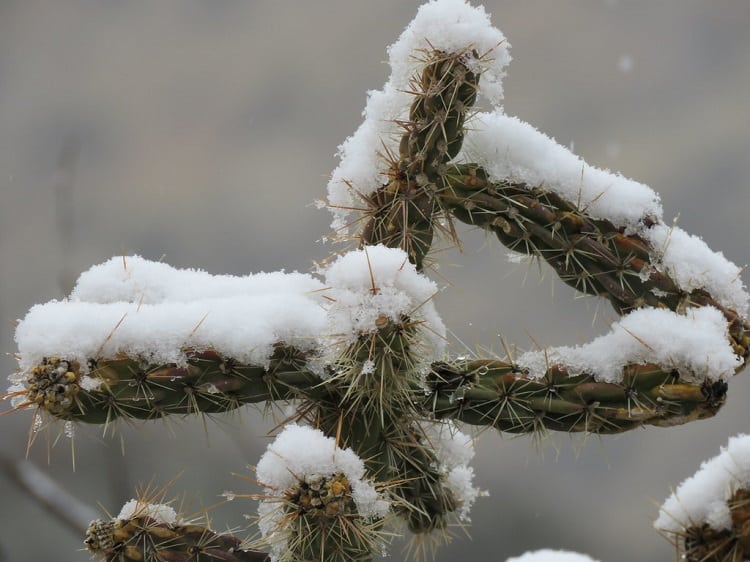
Not all cacti can handle freezing temperatures for an entire winter. Some can tolerate as low as -13°F (-25°C), but these are often the varieties that grow in extreme northern or southern regions of the American continent. The cold tolerance of cacti depends on different factors, like the species, the type of soil they’re planted in, and the weather conditions in the winter. It’s important to know your cactus species and its temperature limits to keep them happy and healthy.
Important stuff to remember!
When cacti reduce their water intake during winter, it puts their roots at risk if the soil is too moist. Excess water can make the roots rot or freeze, which can lead to the sad demise of your beloved cactus. In the winter, cacti don’t need any water and, in fact, they shouldn’t be in contact with it. Some cacti can handle a bit of snow, as long as the ground is dry underneath.
How to Take Care of Outdoor Cacti During Winter
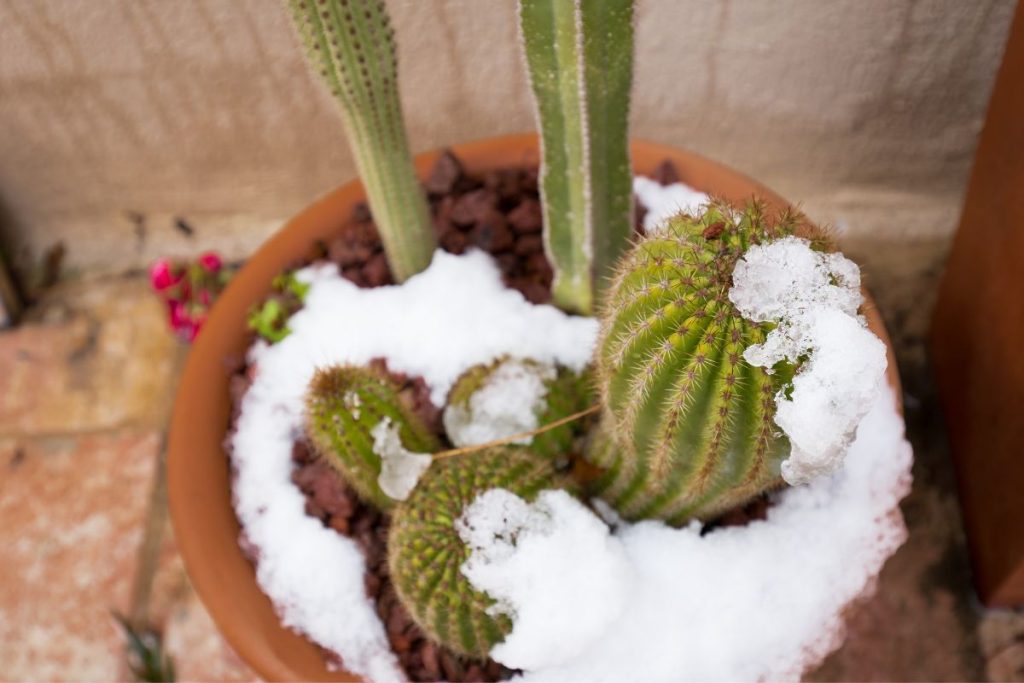
First things first, it’s crucial to research and find out what temperatures your cactus species can handle. You don’t want to accidentally freeze them to death! If you have potted cacti, make sure the soil has good drainage to avoid stagnant water during winter. As autumn rolls in, let the soil dry out completely to protect your cacti in the winter. Many cacti may look dried out and appear dead during this time, but don’t panic! Be patient and wait a couple of weeks after winter to start watering them again. It’s best to increase irrigation gradually.
If you have a greenhouse with cacti and other succulents, be extra cautious. In a controlled environment, the sun can cause damage because these plants won’t be getting their normal hydration. If your cacti can handle the cold but not snow or rain, you can cover the pots or the ground with waterproof materials or tarps. This creates a barrier and reduces the risk of direct contact with moisture. Don’t worry about keeping them covered for a few days—your cacti will thank you! Just remember to check regularly and ensure there’s no dampness under the covers.
Lastly, please don’t attempt to transplant your cacti in the winter. They’re in a state of slumber and won’t be able to adapt to new soil. It’s better to transplant them no later than mid-autumn or in the spring.
If you’re thinking of bringing your cacti indoors during winter, make sure they still get enough light. You can use special grow lights designed for cacti to keep them happy and thriving even during the darker months.
How to Keep Your Cacti Safe from Frost

Frost can be a real challenge for our cacti friends, but fear not! We have some tips to help you protect them from the cold and keep them cozy.
One way to shield frost-resistant cacti from excess moisture caused by snow and rain is to find them a safe spot under a canopy. This nifty rain protection will ensure they stay dry and cozy. If you’re feeling crafty, you can even create a simple frame using posts and transparent greenhouse film to act as a shield from the rain.
By providing this rain canopy, you’ll be giving your cacti the best chance to thrive, even when chilly weather arrives. So, grab your materials and let’s keep those cacti safe from frost!
List of Cold Hardy Cacti
Do you live in a place where frost is common but still want to have some cacti? If so, you’re in luck! Even though we usually associate cacti with hot climates, the truth is that the temperature drops quite a bit in desert nights, and everything living there needs to adapt to these conditions.
So, having a beautiful garden or patio with cacti is definitely possible in areas where frost is sometimes present. Here’s our selection of cold-resistant cacti:
Ferocactus
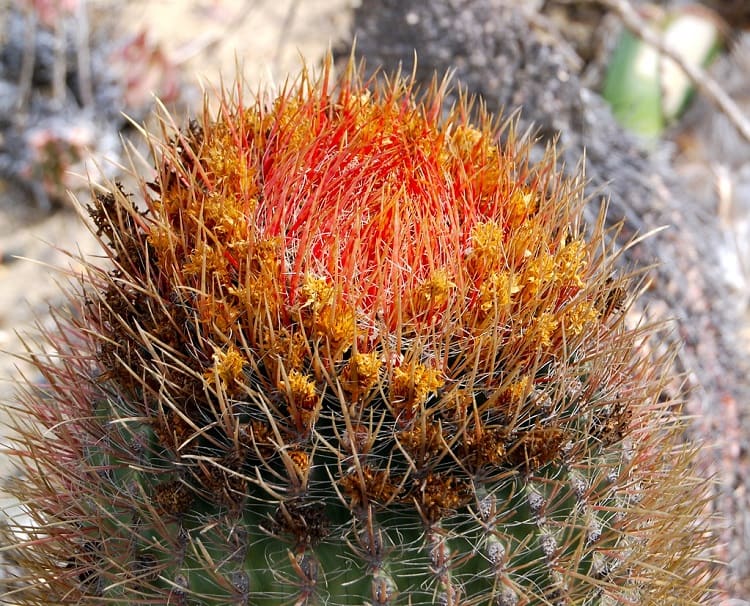
Ferocactus are round-shaped cacti with very long spines (about 2-3 inches), up to 0.4 inches wide and curved. They live in deserts such as California, Baja California, some parts of Arizona, southern Nevada, and Mexico, so they can handle frosts down to -4°C (24°F) quite well.
While most of this genus can tolerate light frosts, some species endure colder temperatures better than others. It’s important to keep them completely dry during frost to prevent rotting. Here’s the approximate cold resistance of the most common species:
- Ferocactus gracilis: -4°C (24°F)
- Ferocactus glaucescens: -4°C (24°F)
- Ferocactus pilosus: -3°C (27°F)
- Ferocactus emoryi: -6°C (21°F)
- Ferocactus rectispinus: -3°C (27°F)
- Ferocactus robustus: -6°C (21°F)
- Ferocactus macrodiscus: -4°C (24°F)
- Ferocactus wislizeni: -6°C (21°F)
Echinopsis
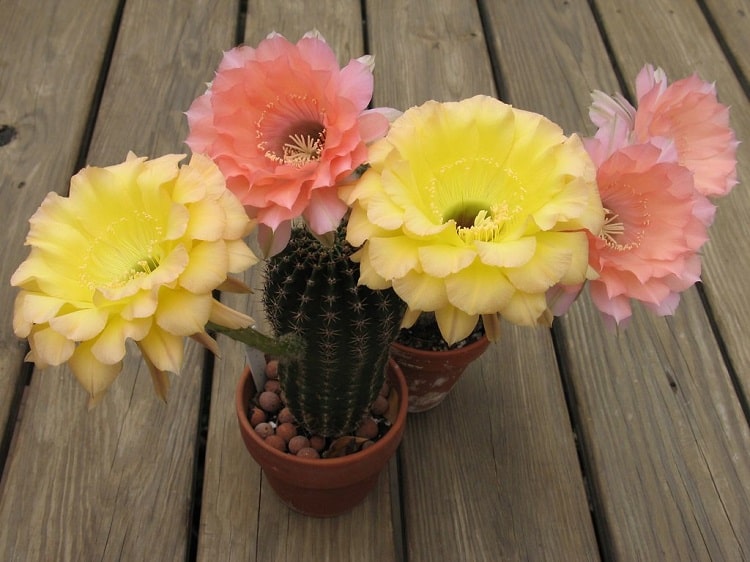
Echinopsis cacti can be round or columnar in shape. Their spines range from about 0.4 to 1.2 inches, depending on the species. These cacti are native to countries like Argentina, Chile, Bolivia, Peru, Brazil, Ecuador, Paraguay, and Uruguay. They can handle average frosts down to -8°C (18°F) and are a reliable choice for surviving winters. Here are some of the most common species:
- Echinopsis subdenudata: -7°C (19°F)
- Echinopsis oxygona: -6°C (21°F)
- Echinopsis leucantha: -12°C (10°F)
- Echinopsis chamaecereus: -8°C (18°F)
- Echinopsis (Lobivia) cinnabarina: -12°C (10°F)
Trichocereus
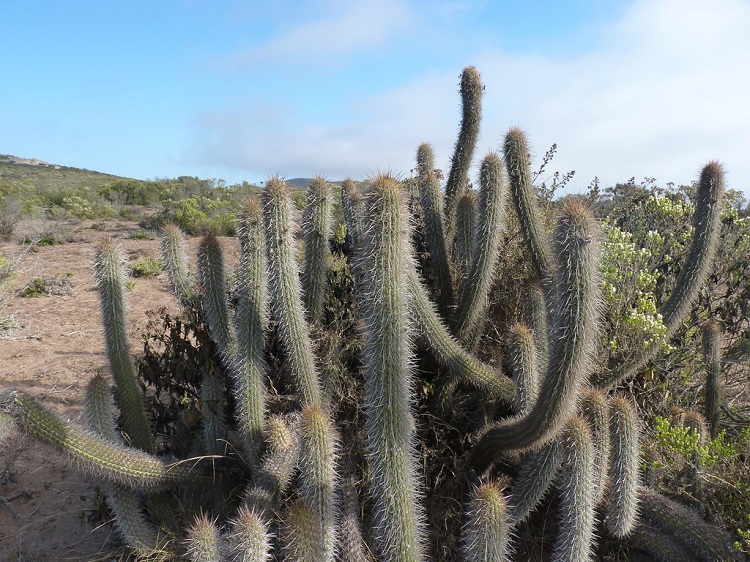
The Trichocereus genus has undergone changes, with most species now considered part of the Echinopsis genus. We’ll talk about both the columnar Echinopsis previously categorized as Trichocereus, and those that are still referred to as Trichocereus. While taxonomists continue to review and reclassify species, it’s common in the hobby to use the old names. These cacti are found in western South America, mainly in the Andes, spanning from Ecuador to central Chile. They resemble Echinopsis in terms of flowers and fruits but tend to have finer spines. Being adapted to high altitudes, they are highly resistant to cold but can be a bit sensitive to heat and require more water. They are also among the fastest-growing cacti. Here are some examples:
- Echinopsis atacamensis (formerly Trichocereus pasacana): -12°C (10°F)
- Trichocereus pachanoi (now considered a subspecies of Trichocereus macrogonus, previously known as Echinopsis pachanoi): -12°C (10°F)
- Echinopsis lageniformis (formerly Trichocereus bridgesii): -10°C (14°F)
Oreocereus
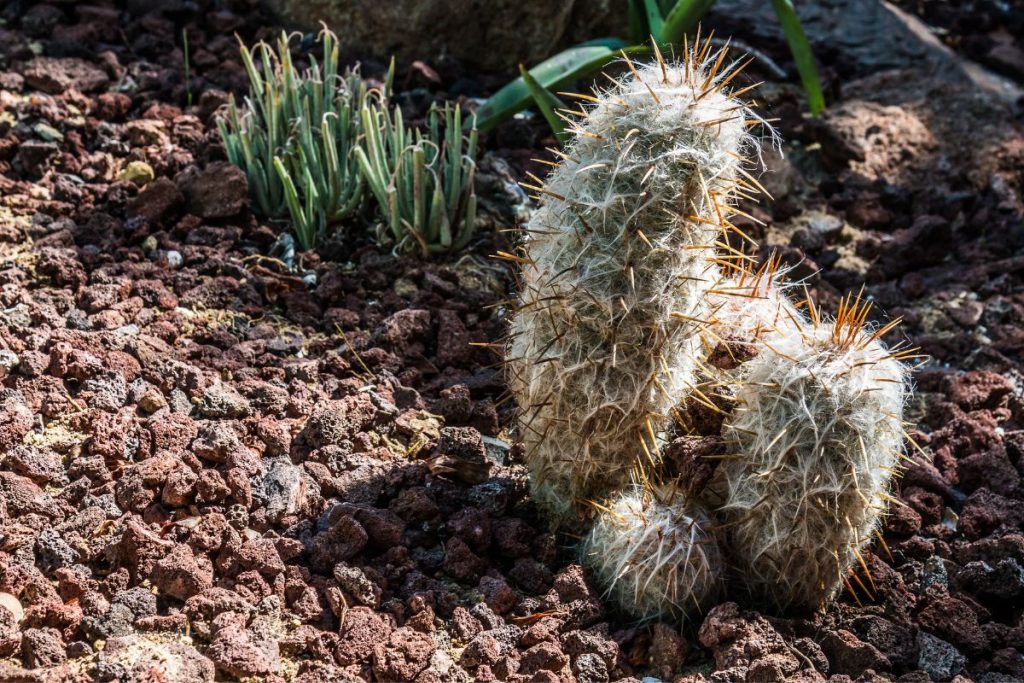
Oreocereus are mainly columnar cacti that can reach heights of about 10 feet. With their stems covered in fibers, they make for a striking decorative addition. These cacti originate from the Andes, where the climate influences their appearance. Most species can withstand frost down to -15°C (5°F), but only if they are kept completely dry. Exposing them to strong frost with a wet substrate can lead to rotting. Here are a couple of common species and the temperatures they can handle with a wet substrate:
- Oreocereus trollii: -5°C (23°F)
- Oreocereus celsianus: -10°C (14°F)
Cleistocactus strausii
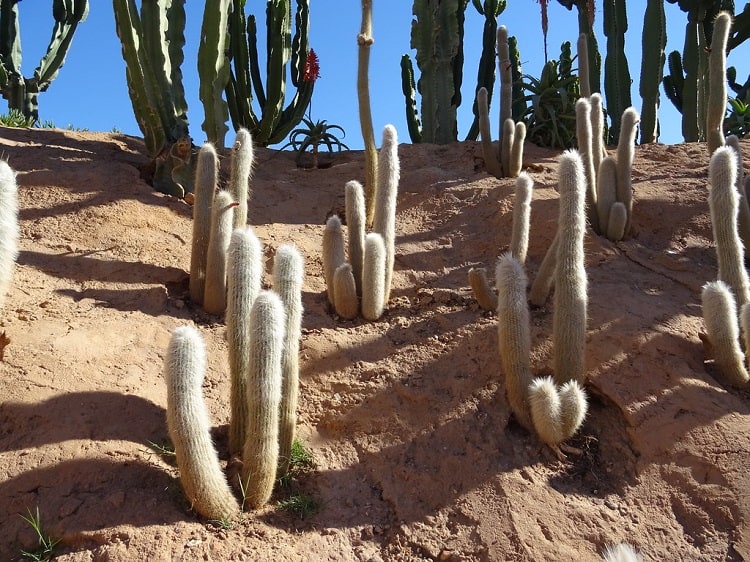
Cleistocactus strausii is a popular choice for cold and humid climates. This species can withstand temperatures below -10°C (14°F), even on a wet substrate. It grows as a columnar cactus, reaching heights of up to 10 feet. Its stems are thin, usually less than 4 inches thick, and covered in white fibers and small yellowish spines. While it produces tubular red flowers, they never fully open.
Opuntia
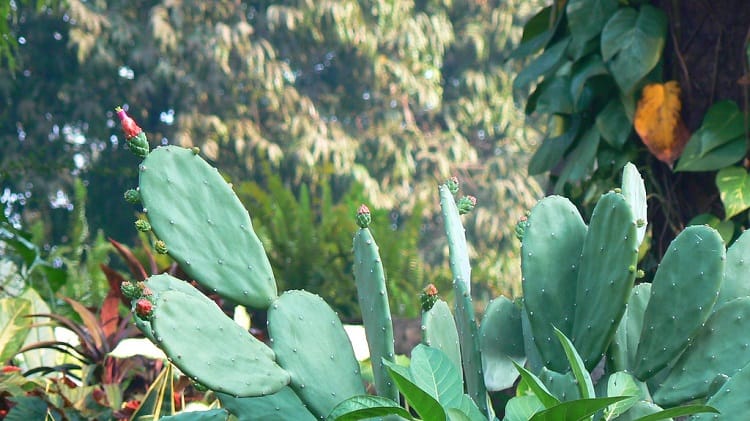
Opuntia cacti are quite typical and recognizable. They have flattened stems that lose their tops after reaching a certain size. Many species have characteristic spines, including smaller ones called glochids that detach easily and can cause irritation. Opuntia is one of the few cacti with leaves, although they are present only during growth. Some species grow into large trees, while others stay as low as 4 inches above the ground. The resistance to cold varies greatly within this vast genus, which has species distributed throughout the Americas. Here are a few common examples:
- Opuntia ficus-indica: -6°C (21°F)
- Opuntia microdasys: -5°C (23°F)
- Opuntia macrocentra: -12°C (10°F)
- Opuntia monacantha: -3°C (27°F)
- Opuntia polyacantha: -15 to -45°C (-5 to -49°F), depending on the clone
Cylindropuntia
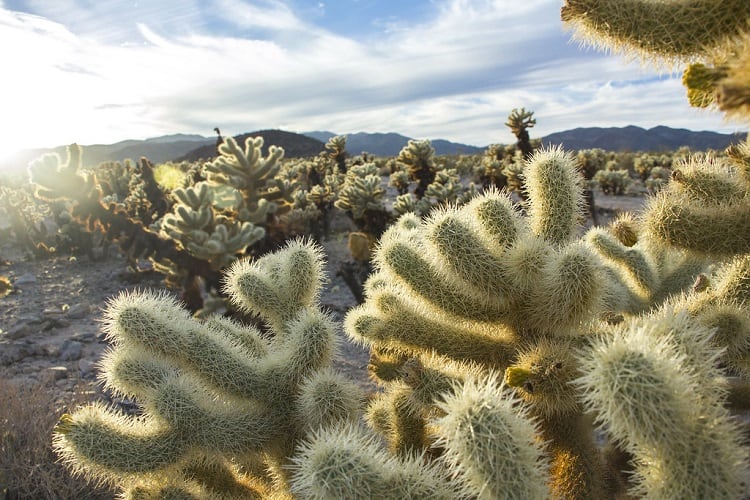
Cylindropuntia cacti grow as cylindrical segments. Some species only lose the apex on lateral branches, while the main stem continues to grow. They can grow up to 10-13 feet, while others stay under 2 feet. Cylindropuntia is known for its large harpoon-shaped spines, reaching about 2 inches in length, which help them hitch rides on animals to spread their seeds. Their resistance to cold varies due to their geographical distribution, ranging from central North America to southern Mexico and northern South America. Here are a few examples:
- Cylindropuntia fulgida: -10°C (14°F)
- Cylindropuntia tunicata: -20°C (-4°F)
- Cylindropuntia rosea: -15°C (5°F)
- Cylindropuntia imbricata: -28°C (-18°F)
- Cylindropuntia spinosior: -20°C (-4°F)
Echinocereus
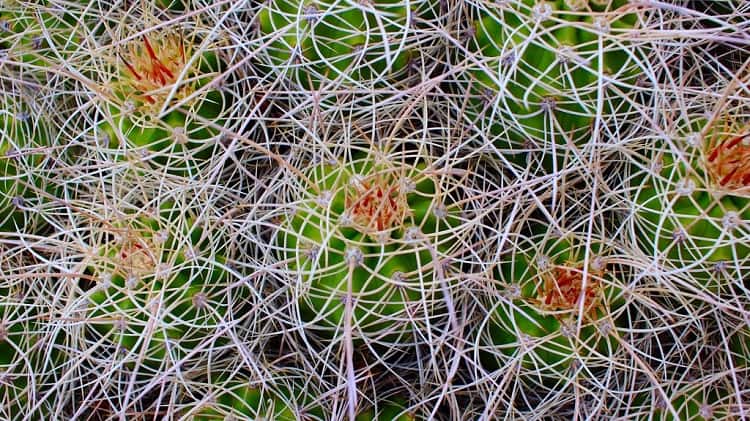
Echinocereus is a genus of small but stunning cacti, known for their large colorful flowers and unique shape and spines. With numerous species, they’re found along the West Coast and central United States, as well as Mexico. Some species are particularly cold-resistant, making them a safe choice for temperatures that don’t drop below -5°C (23°F). Here are some common and highly resistant ones:
- Echinocereus rigidissimus: -12°C (10°F)
- Echinocereus pentalophus: -5°C (23°F)
- Echinocereus subinermis: -2°C (28°F)
- Echinocereus triglochidiatus: -25°C (-13°F)
- Echinocereus dasyacanthus: -10°C (14°F)
- Echinocereus reichenbachii: -30°C (-22°F)
- Echinocereus viridiflorus: -20°C (-4°F)
Escobaria
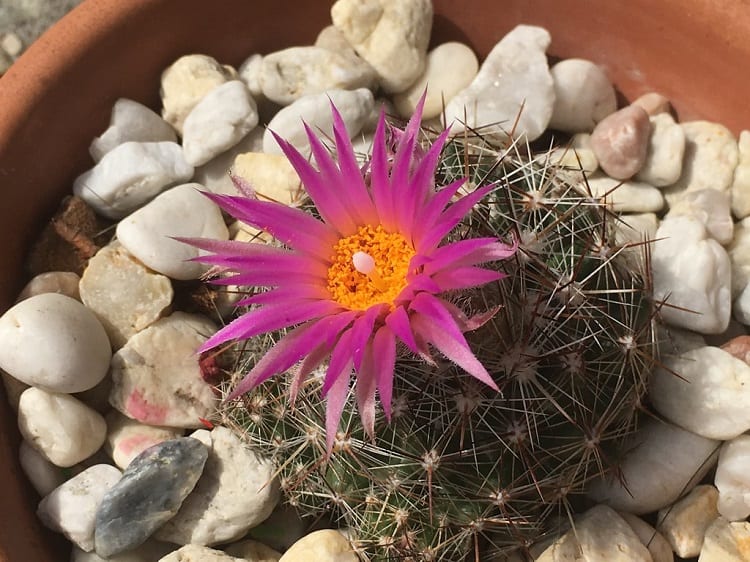
Lastly, we have Escobaria, which includes small cacti found from Canada to Mexico, passing through the entire central United States. Since they originate from Canada, some species are incredibly cold-resistant. These cacti resemble Mammillaria but have larger flowers and are usually covered with small thorns, preventing snow from reaching their stems. They are often overlooked but offer great resilience to cold temperatures. For example:
- Escobaria vivipara: -15 to -45°C (-5 to -49°F), depending on the place of origin
- Escobaria missouriensis: -35°C (-31°F)
Now you can choose the cacti you love the most and create a desert oasis right in your own home!
